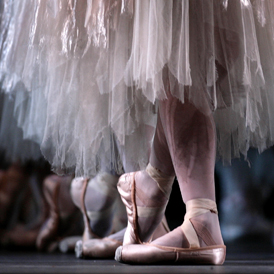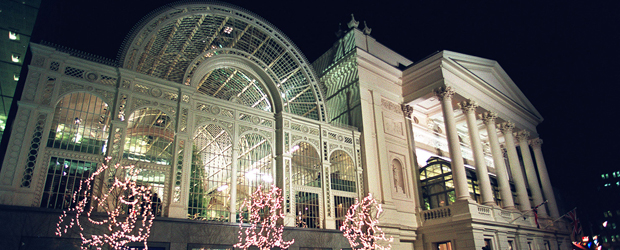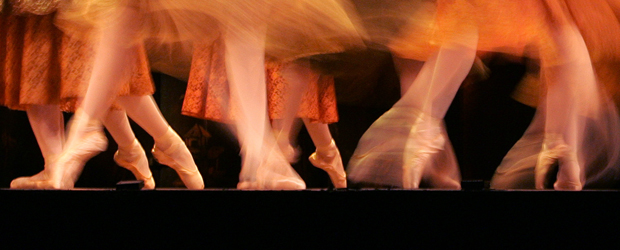How hard is the life of a professional ballet dancer?
Following the shock resignation of Sergei Polunin as principal with the Royal Ballet, Channel 4 News asks: just how gruelling is the life of a classical ballet dancer?
Sergei Polunin, pictured above, has resigned from his role as principal male dancer at the prestigious Royal Ballet.
The 21-year-old from the Ukraine, who joined the Royal Ballet School when he was 13, is widely considered to be one of the Royal Ballet’s most exciting talents. But his resignation may have cut short a sparkling career.
On Tuesday night, the dancer tweeted: “Just have to go through one more night!!! then will make my next moves.”
The Royal Ballet described his exit as a “huge shock”.
I think I missed out by never having that street life doing stupid things. Sergei Polunin, speaking in 2011
But for some perhaps it has not come as so much of a surprise. In various interviews, Polunin has hinted at feeling constricted by ballet.
Last year he told the Independent newspaper: “I don’t do many classes. Sometimes I don’t eat all day, then have four meals between 8pm and 4am. I go to bed really late – if I just sleep I won’t have a life outside ballet,” he said.
“And I have this idea to open a tattoo place… Once I went back to my old city and saw my best friend from childhood walking around with a gang, looking cool. I think I missed out by never having that street life doing stupid things.”
Read more on Sergei Polunin’s resignation from Culture Editor Matthew Cain

Whatever Polunin’s reasons for his departure – and he is keeping quiet for now – it has once again raised the issue of the pressures faced by professional dancers, highlighted dramatically in Darren Aronofsky’s 2010 film, Black Swan.
Sara Matthews is the director of the Central School of Ballet and a former professional dancer. She told Channel 4 News that dancers can only deal with the pressures of reaching the top because they love dancing.
“It has to be – it’s too demanding otherwise,” she said. “When I stopped dancing, one of the first things I noticed was that I didn’t wake up in pain every morning.”
Professional dancers have often trained for more than a decade before they join a company, with the most intense vocational training beginning at 16.
When I stopped dancing, one of the first things I noticed was that I didn’t wake up in pain every morning. Sara Matthews, Central School of Ballet
While training, students will dance between six and seven hours a day. In most professional companies, a morning class at 10 starts the day, and they could rehearse through until 6pm, with breaks. This punishing schedule is usually done up to six days a week.
On performance days, the class may begin slightly later, but then there will still be three or four hours of rehearsal before the three hour performance. Then the dancer will be back the next day to do it all again.
Dancers as athletes
“We think of dancers today as being like athletes, but one of the issues for professional dancers is whereas athletes very much train in phases and work towards peaks, as a dancer you are pretty much performing throughout the year,” Ms Matthews said.
As well as the dance classes, the dancers also often work with Pilates instructors and have other fitness programmes. The male dancers also have specific upper body development programmes.
And behind every dancer, there is often a team of people dedicated to supporting them. At Central, students have a ballet teacher, their tutor; a physiotherapist; a Pilates instructor; a performance psychologist (who also works with the Royal Ballet) and a nutritionist. The nutritionist at Central used to work with the Olympic diving team.
Should anything go wrong, there is access to the leading professionals in the field – for example, there are only two or three specialist surgeons who would operate on top dancers. But at Central they try to avoid this by having an injury prevention and recovery tutor who watches classes to look for potential injury worries.

Among all this dedication, is there any space for a normal life for the dancers? Ms Matthews believes there is.
She told Channel 4 News: “There has to be some space for a normal life. But having said that, a dancer’s career is relatively short and dancers are very focused and disciplined.”
Professional dancers do go out after performances, she said, but often they have the knowledge and nutritional training to understand what their bodies need to function – and what they should avoid, such as alcohol.
“With alcohol, I would say in moderation – your body is your tool and you expect a lot from it, and you have to look after it. And if you don’t, dancers know it doesn’t do what you want it to do,” said Ms Matthews.
Dancers do have holidays, and most companies recommend taking a complete rest for two weeks, although they do continue with things like Pilates work.
Stress and motivation
But Ms Matthews accepts that the intensity of the training and day-to-day life of both students and professional dancers is stressful.
“It can be very high pressure, and also very talented dancers can be promoted very quickly. You can find 19- and 20-year-olds in principal roles. There are a lot of professional skills – a clear one being that when you are up there in front of a paying audience, you have to deliver the goods. So it’s essential to have the support,” she said.
But despite this – and the fact that the top dance schools attract pupils from all over the world – she said there are very few drop-outs.
“By the time dancers get to us, especially the female dancers, they will have been dancing for 10 to 12 years. They will have started around the corner at Mrs Bloggs’ ballet school and realised that this is what they want to do.
“They are incredibly motivated.”
